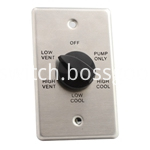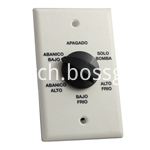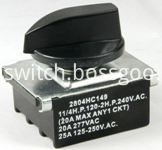The IoT system needed to build smart cities and smart buildings involves a lot of work, including secure and scalable solutions, connecting old devices to the cloud through various necessary linkages; enabling device management, information collection and Processing, presentation, automation, and software to deliver new services. In addition, there is a need for advanced application interfaces that can handle normalized data so that application developers can leverage the infrastructure to deliver value-added applications in less time and at a lower cost.
Developers can dramatically reduce time to market with the IoT framework. They can provide end-to-end solution templates and required gateways for IoT applications. These templates include the software and configuration required to collect, store, analyze, and manage internal devices. What the original equipment manufacturer or system integrator has to do with the production of the product is to adjust the configuration according to different purposes.
The operational framework used by Shaspa, which provides end-to-end solutions for urban and commercial buildings such as retail, hotels or office buildings, is a good example. The company's modular, fully scalable Shaspa Bridge and Shaspa service delivery framework can meet project requirements of any size, from single to millions of building units. Original equipment manufacturers and system integrators are free to choose Shaspa's pre-configured solutions. The main features of these solutions are components from Intel, Wind River, Dell and IBM. They can also choose any of them from this framework. The necessary solutions to meet their unique requirements.
Let us first look at the overall way of operation. Bridging the gap with the IoT gateway The Shaspa IoT solution must first have a common device, the Shaspa Bridge. Based on the Intel IoT Gateway design, Shaspa Bridge provides the infrastructure for connecting and controlling building automation systems, home appliances, and mobile environments (Figure 1).
![Bridge map.jpg]()
Figure 1. The Shaspa Bridge is based on the Intel® IoT Gateway design.
There are two modes of operation for Shaspa Bridge: Standalone or a fully automated service gateway. Standalone mode provides a local solution for connecting and monitoring equipment in commercial buildings to automate equipment. In gateway mode, Shaspa Bridge is a partial extension of the cloud service delivery framework.
This component supports protocols commonly found in building automation systems, including ZigBee, ZWave, KNX, Modbus, Enocean, Profibus, and LON. By connecting existing building control systems to support more than 100,000 devices, Shaspa Bridge can secure investments in older systems or appliances and add new equipment from different vendors. Partners can choose from a wide range of industry-specific applications—from simple demand-driven sub-metering control systems to sophisticated film and television analysis for the retail industry—to build customer applications. At the same time, when new protocols and systems emerge, Shaspa Bridge can easily complete updates to new applications.
Shaspa Bridge can be used in a range of available templates to reduce time to market and meet industry best practices. Reduce the time and cost of updating firmware, applications, and defining data flows through centralized management (except in standalone mode). Developers can also use a simple application to control Shaspa Bridge and then add applications via the Shaspa App Store as needed.
Activating the Application with the Service Delivery Framework The Shaspa Service Delivery Framework is a cloud-based, robust, secure, and highly scalable software platform (Figure 2). Leveraging information from Shaspa Bridge and other channels, this framework collects, stores, and analyzes data for automation.
![Service Delivery Framework.png]()
Figure 2. The Shaspa Service Delivery Framework is a cloud-based, robust, and scalable software solution.
The service delivery framework enables intelligent device management, cross-gateway connectivity, and cloud-based service provisioning platforms to control application deployment with secure data processing. The platform is able to quickly introduce services and scale quickly.
Manufacturers and service providers can jointly design new products related to services by leveraging the Shaspa system, including the application service framework. Typical applications include smart homes, home energy management systems, public energy meters, and green data centers that have a role to play in living, electric mobility, and carbon management. The application service framework integrates technology into device management and services.
The Shaspa Service Delivery Framework is available for valuable tools such as IBM* Informix*, IBM Messagesight, IBM Cognos, Dell StaTIsTIca, and SAP PM. These tools improve efficiency by analyzing and providing insights, laying the foundation for the introduction of new services while accumulating data.
The Smart Provisioning Framework also makes it easy to improve the benefits of managing all types of assets—traditional IT, physical assets, and emerging smart assets—with just one platform. A comprehensive understanding of all types of assets is possible through solutions within the Smart Supply Framework, such as IBM Maximo® Asset and Service Management or SAP PM. Combine the information provided by the connected Shaspa gateway device with the Shaspa cloud information to find a more accurate way to maximize device effectiveness and best efficiency.
The key to the versatility of the IoT Universal Solution Shaspa Service Delivery Framework is the scalability of the Intel IoT Gateway Design (Figure 3). Intel IoT gateway solutions range from Intel® QuarkTM SoC systems for headless applications to powerful sixth-generation Intel core processors that run high-performance analytics processors to reduce network traffic And cloud costs.![Service Delivery Framework -1.png]()
Figure 3. The scalable design of the Intel IoT Gateway enables Shaspa Bridge to handle a range of usage models.
For applications that require smart meters, demand response and intelligent automation, Shaspa Bridge has Intel Quark SoCs to meet different environmental needs. Software includes Wind River* Linux* and Wind River Helix* Cloud.
If the requirements for local processing or filtering are high, Shaspa will use the Dell Edge Gateway 5000 series, which is based on the Intel® AtomTM processor E3800 series. These processors feature a 22nm 3-D tri-gate transistor process with high computational performance and high-definition graphics for small form factors such as gateways. The 5W-10W Thermal Design Power (TDP) makes these processors an excellent low-cost, low-power solution for embedded environments.
Developers can dramatically reduce time to market with the IoT framework. They can provide end-to-end solution templates and required gateways for IoT applications. These templates include the software and configuration required to collect, store, analyze, and manage internal devices. What the original equipment manufacturer or system integrator has to do with the production of the product is to adjust the configuration according to different purposes.
The operational framework used by Shaspa, which provides end-to-end solutions for urban and commercial buildings such as retail, hotels or office buildings, is a good example. The company's modular, fully scalable Shaspa Bridge and Shaspa service delivery framework can meet project requirements of any size, from single to millions of building units. Original equipment manufacturers and system integrators are free to choose Shaspa's pre-configured solutions. The main features of these solutions are components from Intel, Wind River, Dell and IBM. They can also choose any of them from this framework. The necessary solutions to meet their unique requirements.
Let us first look at the overall way of operation. Bridging the gap with the IoT gateway The Shaspa IoT solution must first have a common device, the Shaspa Bridge. Based on the Intel IoT Gateway design, Shaspa Bridge provides the infrastructure for connecting and controlling building automation systems, home appliances, and mobile environments (Figure 1).
Figure 1. The Shaspa Bridge is based on the Intel® IoT Gateway design.
There are two modes of operation for Shaspa Bridge: Standalone or a fully automated service gateway. Standalone mode provides a local solution for connecting and monitoring equipment in commercial buildings to automate equipment. In gateway mode, Shaspa Bridge is a partial extension of the cloud service delivery framework.
This component supports protocols commonly found in building automation systems, including ZigBee, ZWave, KNX, Modbus, Enocean, Profibus, and LON. By connecting existing building control systems to support more than 100,000 devices, Shaspa Bridge can secure investments in older systems or appliances and add new equipment from different vendors. Partners can choose from a wide range of industry-specific applications—from simple demand-driven sub-metering control systems to sophisticated film and television analysis for the retail industry—to build customer applications. At the same time, when new protocols and systems emerge, Shaspa Bridge can easily complete updates to new applications.
Shaspa Bridge can be used in a range of available templates to reduce time to market and meet industry best practices. Reduce the time and cost of updating firmware, applications, and defining data flows through centralized management (except in standalone mode). Developers can also use a simple application to control Shaspa Bridge and then add applications via the Shaspa App Store as needed.
Activating the Application with the Service Delivery Framework The Shaspa Service Delivery Framework is a cloud-based, robust, secure, and highly scalable software platform (Figure 2). Leveraging information from Shaspa Bridge and other channels, this framework collects, stores, and analyzes data for automation.
Figure 2. The Shaspa Service Delivery Framework is a cloud-based, robust, and scalable software solution.
The service delivery framework enables intelligent device management, cross-gateway connectivity, and cloud-based service provisioning platforms to control application deployment with secure data processing. The platform is able to quickly introduce services and scale quickly.
Manufacturers and service providers can jointly design new products related to services by leveraging the Shaspa system, including the application service framework. Typical applications include smart homes, home energy management systems, public energy meters, and green data centers that have a role to play in living, electric mobility, and carbon management. The application service framework integrates technology into device management and services.
The Shaspa Service Delivery Framework is available for valuable tools such as IBM* Informix*, IBM Messagesight, IBM Cognos, Dell StaTIsTIca, and SAP PM. These tools improve efficiency by analyzing and providing insights, laying the foundation for the introduction of new services while accumulating data.
The Smart Provisioning Framework also makes it easy to improve the benefits of managing all types of assets—traditional IT, physical assets, and emerging smart assets—with just one platform. A comprehensive understanding of all types of assets is possible through solutions within the Smart Supply Framework, such as IBM Maximo® Asset and Service Management or SAP PM. Combine the information provided by the connected Shaspa gateway device with the Shaspa cloud information to find a more accurate way to maximize device effectiveness and best efficiency.
The key to the versatility of the IoT Universal Solution Shaspa Service Delivery Framework is the scalability of the Intel IoT Gateway Design (Figure 3). Intel IoT gateway solutions range from Intel® QuarkTM SoC systems for headless applications to powerful sixth-generation Intel core processors that run high-performance analytics processors to reduce network traffic And cloud costs.
Figure 3. The scalable design of the Intel IoT Gateway enables Shaspa Bridge to handle a range of usage models.
For applications that require smart meters, demand response and intelligent automation, Shaspa Bridge has Intel Quark SoCs to meet different environmental needs. Software includes Wind River* Linux* and Wind River Helix* Cloud.
If the requirements for local processing or filtering are high, Shaspa will use the Dell Edge Gateway 5000 series, which is based on the Intel® AtomTM processor E3800 series. These processors feature a 22nm 3-D tri-gate transistor process with high computational performance and high-definition graphics for small form factors such as gateways. The 5W-10W Thermal Design Power (TDP) makes these processors an excellent low-cost, low-power solution for embedded environments.
Kara offers a range of Rotary Switches.Ranging from 5 to 9 poles,15VA to 25 amp,with many choices of functions,especially the switches with High-Current .Certifications include CSA, CE, and more.
This item used very in the line of cooler,with metal panel or plastic panel or only switch are all available.



Rotary Switch,Rotary Switch Knobs,Rotary Switch 6 Position,Mini Rotary Switch
Ningbo Kara Electronic Co.,Ltd. , https://www.kara-switch.com
